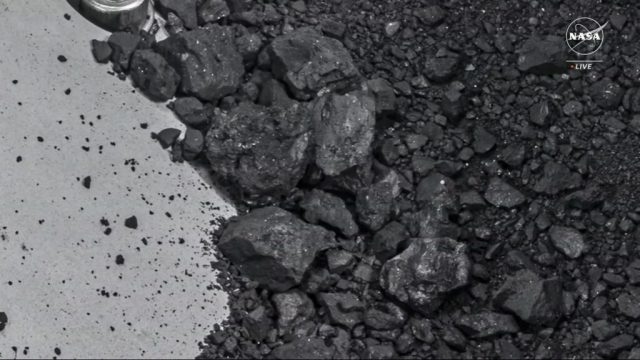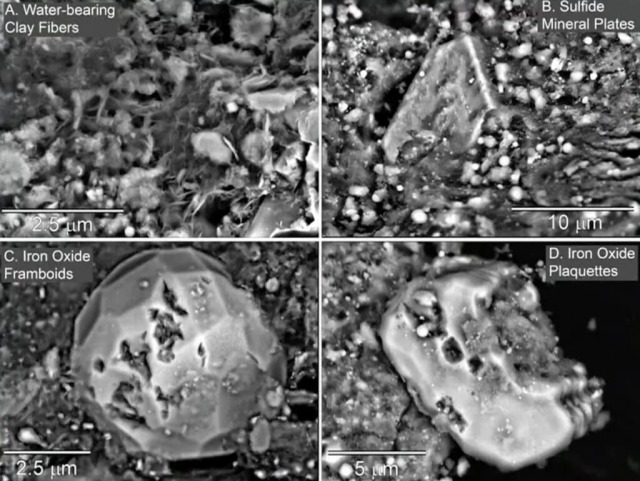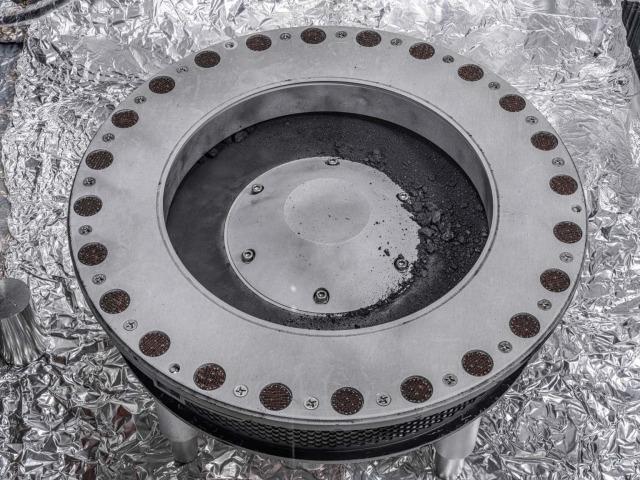The soil samples delivered to Earth from the near-Earth asteroid Bennu contain water and carbon. With a high degree of probability, scientists will find other "building blocks of life" in the breed of the "space wanderer". This assumption was voiced by NASA representatives during the presentation of asteroid samples, which took place at the Lyndon Johnson Space Center in Houston.
Two weeks after the capsule with asteroid material collected by OSIRIS-REx from the surface of Bennu landed in the US state of Utah, NASA scientists finally presented it to the public and shared the first results.
A cursory analysis of some of the asteroid samples, namely, the additional material that appeared on the lid and base of the container (it has not yet been opened), showed that this material consists of both particles smaller than dust and fragments several millimeters in size. The scientists examined the "additional samples" using a scanning electron microscope, X-ray computed tomography, and a chemical composition analyzer and found water in them as part of clay minerals, as well as carbon both in the composition of inorganic minerals and in the form of organic molecules. Water and carbon are the most important components necessary for the origin of life as we know it. In other words, scientists have found another proof in favor of the hypothesis that the foundations of life on our planet were brought from space.
 |
| The ground of the asteroid Bennu close-up. |
| Source: NASA |
In total, the researchers planned to get 60 grams of samples from Bennu, but when they saw the container, it turned out that there was a lot of "excess material" on its surface. OSIRIS-REx collected 250 grams of "black dust": the sampling device pressed so hard on the surface of the Bennu that it captured a lot of rubble. In any case, this is many times more than the previous two similar, returnable, missions collected. For example, the Japanese Hayabusa-2 probe delivered only 5.4 grams of material to Earth from the Ryugu asteroid.
NASA said that the OSIRIS-REx team will continue to study asteroid samples for two years, with 70 percent of the material remaining at the space center in Houston for "further research by scientists around the world, including future generations." The space agency did not specify where the remaining 30 percent of the "black dust" will go.
 |
| Fragments of samples collected from Bennu, under a microscope. |
| Source: NASA |
OSIRIS-REx is the first NASA mission to visit the near—Earth asteroid Bennu in order to study and take soil samples from its surface to return to Earth and the third of the New Frontiers program.
NASA chose Bennu for several reasons. Firstly, the age of the asteroid: it is 4.5 billion years old, which means that the surface may contain organic compounds left over from the formation of the Solar System. Secondly, the orbit: it intersects with the orbit of our planet, which facilitates the "round trip". Thirdly, calculations show that in 2182 an asteroid can approach the Earth at a dangerous distance — the study will help to understand how to effectively change its orbit to avoid a possible collision.
The OSIRIS-REx automatic station went to Benn in September 2016 and reached it at the end of December 2018. The collection of samples took place in 2020 and was carried out using a three-meter suction tube, there was no landing on the asteroid itself. In 2021, OSIRIS-REx headed to Earth, and in September 2023 released a capsule that landed in Utah.
The mission did not end there: the probe went to the asteroid Apophis and will reach its goal in 2029, after which it will study the object from orbit for 18 months.

